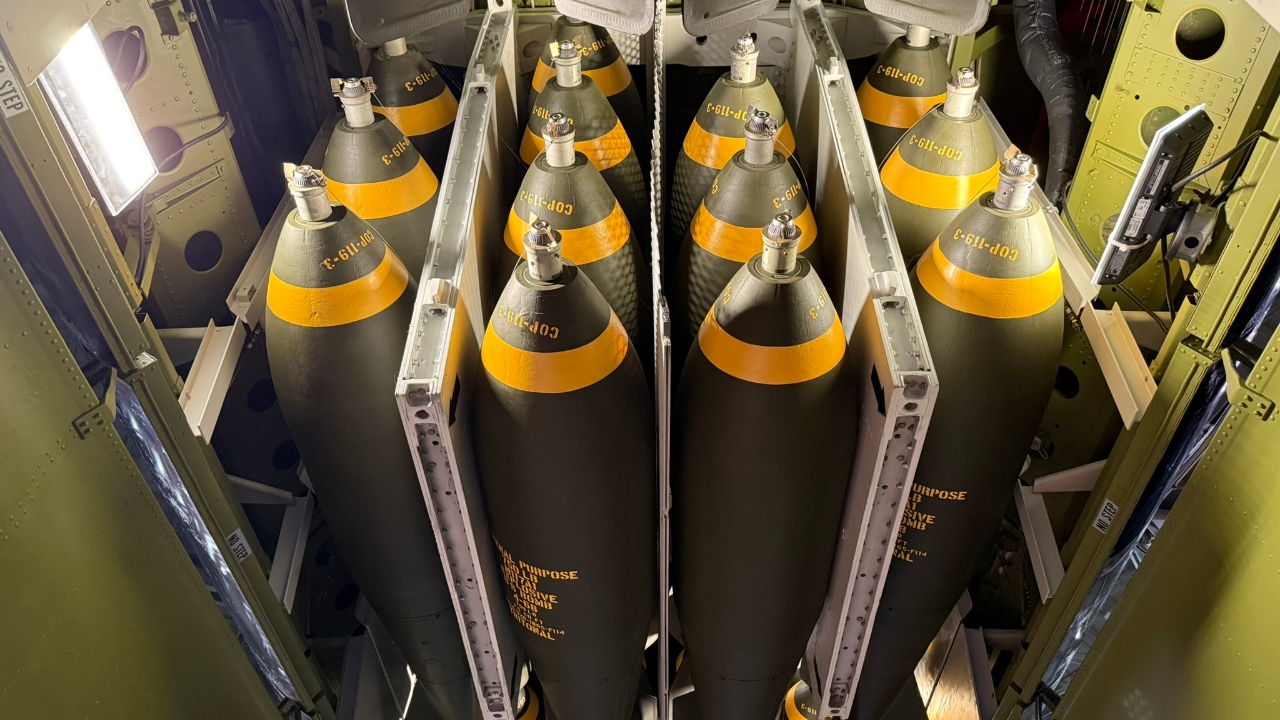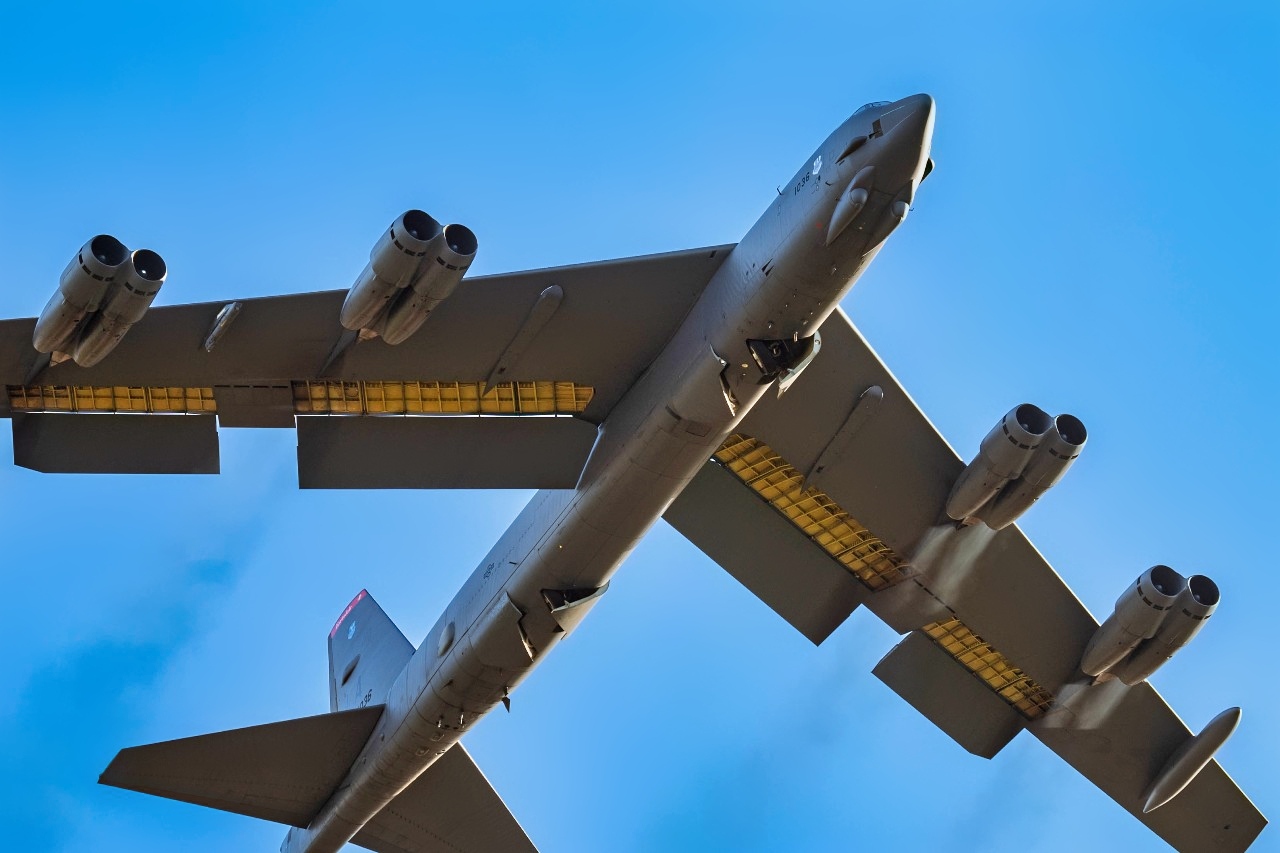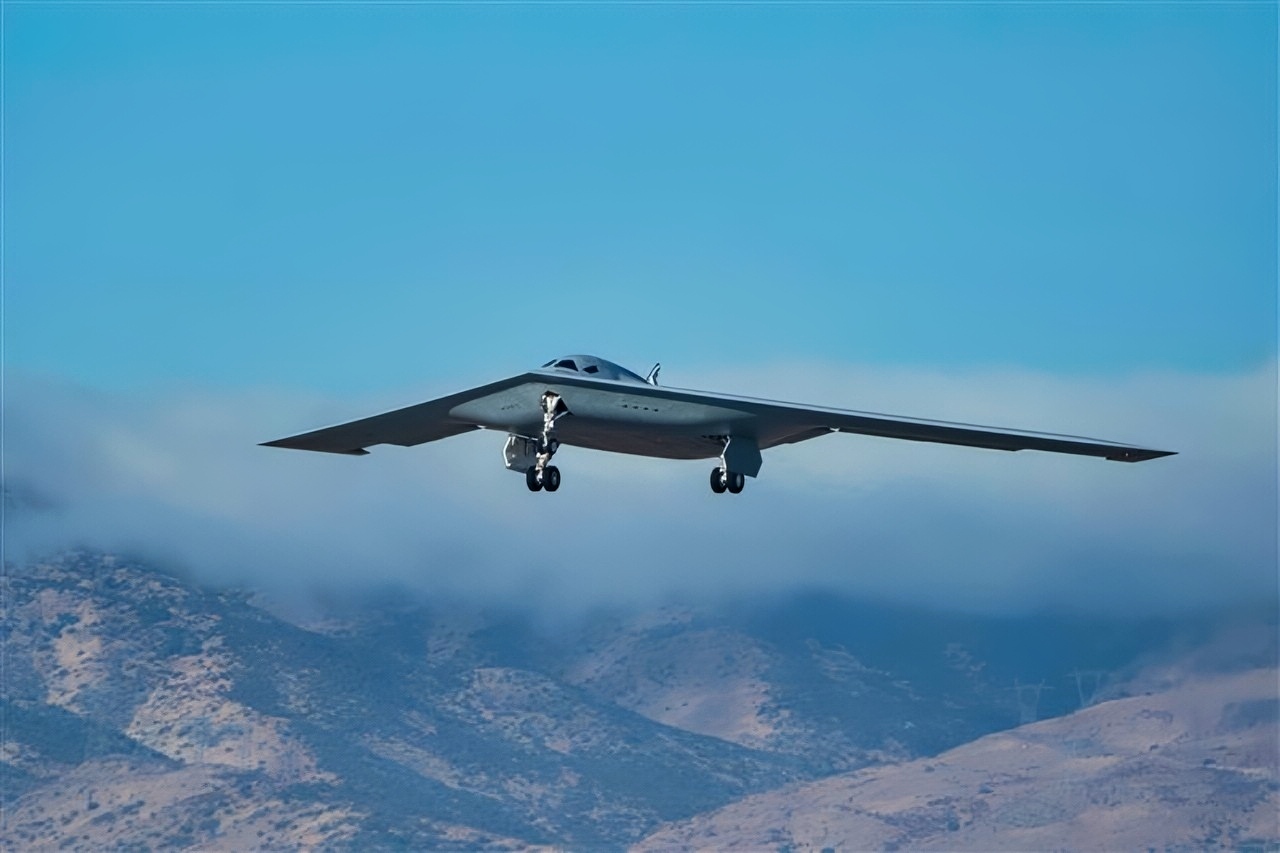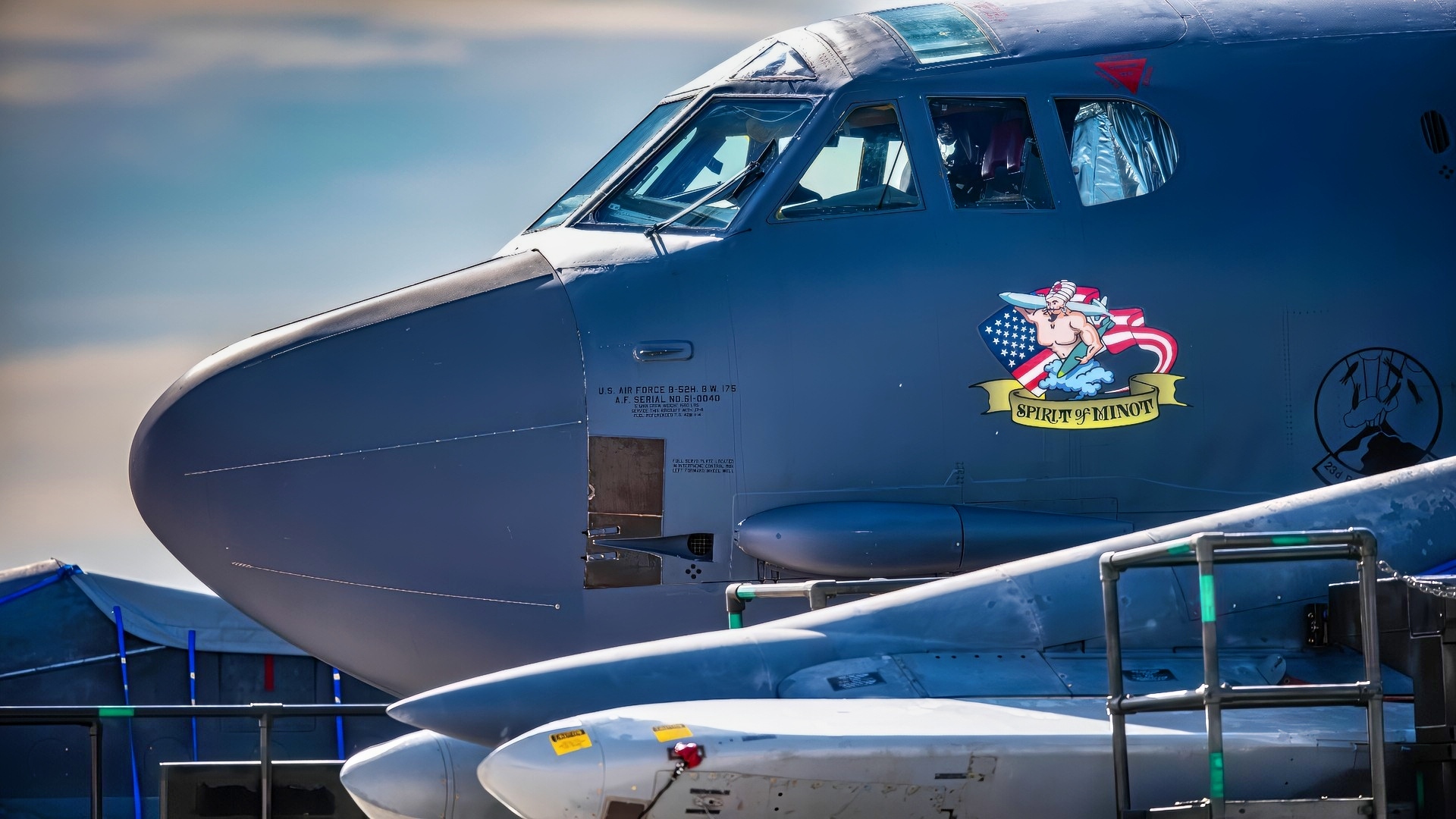Key Points and Summary – With B-52J upgrades stumbling, the Air Force is eyeing a larger B-21 Raider fleet.
-Former USAF chief Gen. David Allvin told senators he’d “take all I can get,” as engine and radar modernizations for 76 BUFFs breach cost baselines and slip schedules, including a significant Nunn–McCurdy on the radar.

B-52 Bomber Bombs. Image Credit: National Security Journal.
-The non-stealth B-52J is optimized for standoff weapons, but survivability gaps in contested airspace fuel calls to lift the B-21 buy from the 100-jet minimum toward ~145 and to accelerate production—potentially by shifting B-52J funds—amid rising pressure from Russia, China, and Middle East crises.
The B-52J Bomber: Is It Being Replaced by More B-21 Raider Bombers?
WARSAW, POLAND – Recently, it became known that the US Air Force (USAF) may have to increase the number of B-21 Raider bombers to be procured beyond the initially planned 100 units.
Several factors are driving that requirement: increased tensions with Russia over the war in Ukraine, a constantly more expansionist People’s Republic of China (PRC), and the unrest in the Middle East, to name a few.
But one of the other, non-geopolitical factors is that the upcoming B-52J upgrade is proving to be more complicated than planned and is stretching the timeline to the right.
This was the testimony of then-USAF Chief of Staff Gen. David W. Allvin when he appeared before the Senate Armed Services Committee (SASC) on May 20.
If the B-52 modernization program “goes worse than we hope, then we would need more” money for B-21s, Allvin told Sen. Mike Rounds (R-S.D.).
When the Republican Senator was then asked if the USAF planned number of B-21s to be allocated was “anywhere close” to the service’s requirement, Allvin answered that he would “take all I can get with the funding.”

A B-52H Stratofortress assigned to the 20th Expeditionary Bomb Squadron takes off from RAF Fairford, England, for a training mission with the Royal Moroccan Air Force during Bomber Task Force 25-1, Nov. 22, 2024. The U.S. and Morocco’s strategic partnership is based on mutual interests in regional peace, security and prosperity, and we remain dedicated to working together on shared concerns. (U.S. Air Force photo by Senior Airman Mary Bowers)
Allvin did not ultimately ask for more B-21s – though he did not specify how many total aircraft would be enough to meet the service’s requirement.
Three months later, he was forced out of the Chief of Staff’s job in another one of the Trump Administration Pentagon’s realignments. He will retire in November.
Reportedly, his removal was a desire by the Pete Hegseth Pentagon to move away from plans for a service-wide reorganization that former Air Force Secretary Frank Kendall had advocated.
The initiative “Reoptimizing for Great Power Competition” was seen as “more distracting than helpful” as the USAF is busy coping with some of the lowest readiness rates ever and personnel problems.
Parallel Upgrade on B-52J Bomber
The B-52J upgrade program consists of two parallel efforts: the Commercial Engine Replacement program (CERP) and the Radar Modernization Program (RMP), both of which are in process.
These two major re-fits will, first of all, replace the engines and pylons of all 76 airplanes in the B-52H fleet.
The second part of the program is a replacement of the radar, upgrades of the communications suites, and several other improvements.
But the effort has hit more than one snag in the process.
The radar upgrade has triggered a Nunn-McCurdy Act breach on the grounds that it has overrun the projected cost of that part of the program.
The breach is categorized as “significant,” a designation given only when there is a 15 percent or more deviation from the base cost or schedule.

A second B-21 Raider, the nation’s sixth-generation stealth bomber, joins flight testing at Edwards Air Force Base, Calif., Sept. 11. The program is a cornerstone of the Department of the Air Force’s nuclear modernization strategy, designed to deliver both conventional and nuclear payloads. (Courtesy photo)
But the increasing questions about problems with the B-52J upgrade caused Allvin to vacillate, and to appear to test the possibility of going above the buy of 100 of the B-21.
The B-21, he said at the time, is an “incredible capability” that has gone “pretty well” in its flight test.
“The 100 minimum is certainly something we can stand behind,” he said. “When we look at what the maximum is, I really want to look at the risk over time, and opportunities over time.”
Requirements and Survivability
When he had spoken to the SASC, Alvin had not indicated he would request more than 100 B-21s.
He had even said that by the time they were all delivered, advancements in technology might generate a new program – a completely new design, next-gen bomber platform.
If that remains the direction of travel even now, after Allvin has announced his retirement, the money being spent on the B-52J could eventually be viewed as resources being wasted and better spent elsewhere.
B-52J’s major shortcoming is that it is a non-stealthy platform.
Having such a large radar cross section (RCS) renders the aircraft unusable for missions that require a bomber to penetrate a contemporary air defense network.
It is true that the aircraft, once modernized, will be optimized for standoff attacks with long-range weapons. But its lack of survivability in contested environments may be cause for the program to be truncated. Its inability to fly supersonic is another – and then there’s its limited 50,000 operational ceiling.

B-2 Bomber. Image Credit: Creative Commons.
As of today, there are numerous discussions among the USAF brass about the optimal number of B-21s, now being 145.
Some of the same senior-level officers are also suggesting that the rate of production should be accelerated in order to receive more of the B-21s sooner.
If these proposed expansions to the B-21 program are implemented, the increase in outlays for that program could be substantial.
The B-52J program budget will likely be “robbed” to pay for the extra, unplanned flying wing bombers.
About the Author: Reuben F. Johnson
Reuben F. Johnson has thirty-six years of experience analyzing and reporting on foreign weapons systems, defense technologies, and international arms export policy. Johnson is the Director of Research at the Casimir Pulaski Foundation. He is also a survivor of the Russian invasion of Ukraine in February 2022. He worked for years in the American defense industry as a foreign technology analyst and later as a consultant for the U.S. Department of Defense, the Departments of the Navy and Air Force, and the governments of the United Kingdom and Australia. In 2022-2023, he won two awards in a row for his defense reporting. He holds a bachelor’s degree from DePauw University and a master’s degree from Miami University in Ohio, specializing in Soviet and Russian studies. He lives in Warsaw.
More Military
The F-22 Raptor’s Biggest Problem in 1 Word
The B-21 Raider Has a Weakness
Europe Has a Message for the F-35 Stealth Fighter
The Super Dassault Rafale: Can It Surpass the F-35?
Eurofighter Typhoon vs. F-47 NGAD 6th Generation Fighter: Who Wins in 4 Words










